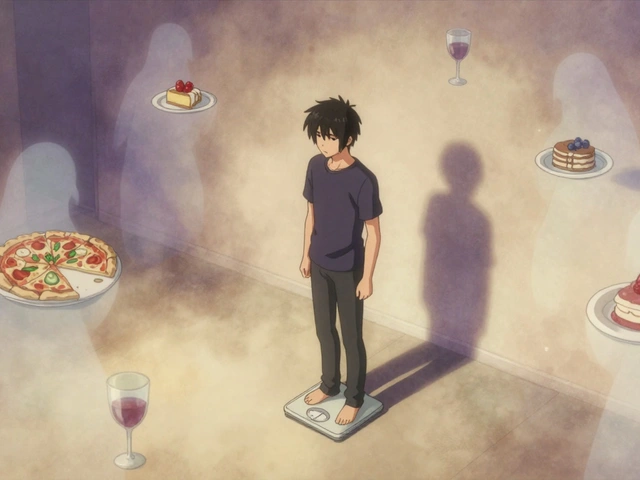
Every year, thousands of people start taking new medications. But what happens after a drug hits the market? Just because the FDA approved it doesn’t mean all the risks are known. That’s where Drug Safety Communications come in. These aren’t ads. They aren’t press releases. They’re official, science-backed warnings from the FDA that can change how doctors prescribe and how patients take their meds.
What Exactly Is a Drug Safety Communication?
A Drug Safety Communication (DSC) is the FDA’s way of telling doctors, pharmacists, and patients about new safety issues with medicines that are already being used. These aren’t about problems found during clinical trials. Those happen before approval. DSCs are about things that show up after the drug is out in the real world-where millions of people are using it, often with other drugs, chronic conditions, or different dosages.
The FDA defines them as safety issues that could change the balance between a drug’s benefits and its risks. That means something serious enough to make a doctor think twice before writing a prescription-or a patient reconsider whether to keep taking it.
Since 2007, when Congress gave the FDA more power to monitor drugs after approval, these communications have become a core part of how the agency protects public health. In 2008, the FDA issued 42 DSCs. By 2024, that number had jumped to 187. Why? Because we’re tracking more people, using better tools, and seeing risks we never noticed before.
How Does the FDA Decide to Issue One?
The FDA doesn’t act on every report of side effects. It uses a system called pharmacovigilance to sift through thousands of reports every year. These come from doctors, patients, hospitals, and even pharmaceutical companies. The agency also uses the Sentinel Initiative, which monitors health records from over 300 million Americans across 16 different systems.
If a pattern emerges-like a spike in liver damage among users of a certain diabetes drug, or a rise in heart rhythm problems with an antidepressant-the FDA digs deeper. They look at:
- Epidemiological studies
- Adverse event databases
- Post-market clinical trials
- Real-world data from electronic health records
Only when there’s enough evidence to suggest a real, measurable risk do they issue a DSC. And even then, they don’t always say “stop taking it.” Sometimes, they say “use lower doses,” “avoid it in elderly patients,” or “monitor blood tests every three months.”
What’s in a Typical Drug Safety Communication?
Every DSC follows a clear, consistent format so you know exactly where to find the info you need:
- What Safety Concern Is FDA Announcing? - The problem, in plain language. For example: “Long-term use of extended-release opioids increases risk of addiction and overdose.”
- Recommendations for Health Care Professionals - What doctors and pharmacists should do. This might include changing prescriptions, ordering tests, or updating patient records.
- Recommendations for Patients - What patients should know and ask their provider. No jargon. Just clear action steps.
- Additional Information - Links to related guidance, labeling changes, or regulatory actions like new Risk Evaluation and Mitigation Strategies (REMS).
Take the 2025 DSC on opioid pain medicines. It didn’t pull the drugs off shelves. Instead, it required manufacturers to update labels to warn about risks of long-term use-and told doctors to avoid prescribing them for chronic non-cancer pain unless absolutely necessary.
Why Do These Communications Matter in Real Life?
They’re not just paperwork. They change behavior.
In 2023, a DSC warned that certain heartburn drugs (PPIs) could raise the risk of a severe gut infection called C. difficile. A follow-up survey found that 73% of patients who learned about this talked to their doctor. But only 38% actually stopped taking the drug. That’s the gap between awareness and action.
On the flip side, when the FDA warned about citalopram (an antidepressant) causing dangerous heart rhythm changes in older adults, one geriatrician in Boston saw immediate results. After reducing doses in elderly patients, she reported fewer arrhythmias in her clinic. That’s the power of timely, clear information.
But not everyone pays attention. A 2024 survey found that 68% of hospital pharmacists check the FDA’s DSC page weekly. Only 42% of community pharmacists do. And while big EHR systems like Epic and Cerner now push out alerts, only 58% of them correctly flag how urgent each warning is. That means some doctors see a low-priority alert when they should be treating a high-risk situation.

How Fast Do These Warnings Come Out?
For years, critics said the FDA was too slow. A 2019 study found it took an average of 2.6 years from the first safety signal to a public DSC. That’s too long when lives are at stake.
That’s changing. Since 2025, the FDA has started using AI to scan data faster. Now, the average time has dropped to 1.8 years-and they’re aiming to cut it to 1.2 years by 2027. They’re also sharing preliminary findings earlier, even while still analyzing the data. Instead of waiting for perfect proof, they’re saying: “Here’s what we’re seeing. Be cautious.”
Who Uses These Communications?
Doctors and pharmacists are the frontline users. But patients are increasingly part of the conversation. The FDA now includes patient-focused language in 47% of DSCs-up from just 28% between 2018 and 2020. That’s a big shift. They’re no longer just talking to experts.
Health systems are also adapting. Some hospitals have pharmacists dedicated to reviewing DSCs weekly. The American College of Physicians recommends that all clinicians spend 15-20 minutes a week checking for updates.
And the pharmaceutical industry? They’re spending $15-25 million a year per company just to track these alerts and update their safety systems. Companies like ArisGlobal and Oracle Health Sciences now sell software specifically built to manage DSC compliance. The global market for this tech is worth $2.3 billion-and growing fast.
What Happens After a DSC Is Issued?
Issuing a warning isn’t the end. It’s the start of a chain reaction:
- The drug’s label gets updated to include new warnings.
- A REMS program might be added-requiring special training for prescribers or patient education materials.
- In rare cases, the drug is pulled from the market (like the painkiller Vioxx in 2004).
- Other countries often follow suit. The European Medicines Agency issues similar alerts called “Article 31 Opinions.”
But here’s the hard truth: a 2025 Johns Hopkins study found that only 61% of critical DSC recommendations lead to measurable changes in prescribing within six months. That means nearly four in ten warnings don’t change practice. Why? Too many alerts. Too little clarity. Too much alert fatigue.
One pharmacist on Reddit said: “I get 3-4 DSCs a week. I can’t tell which ones actually matter.” That’s the problem the FDA is now trying to fix-by making alerts more targeted, more urgent, and more actionable.

How to Stay Updated
You don’t need to check the FDA website every day. But if you’re on medication-or care for someone who is-you should know how to get updates:
- Subscribe to FDA’s email alerts for Drug Safety Communications. Over 147,000 healthcare professionals do.
- Use the FDA’s searchable DSC database. Filter by drug name, date, or specialty (cardiology, geriatrics, oncology).
- Ask your pharmacist: “Are there any new FDA warnings about my meds?”
- Check your EHR system’s safety alert settings. Make sure critical DSCs aren’t buried under low-priority notices.
And if you’re a patient: don’t ignore a DSC. Don’t panic. Don’t stop your medicine on your own. But do bring it up with your doctor. Ask: “Is this warning relevant to me? Should we change anything?”
The Bigger Picture
Drug Safety Communications are the FDA’s way of saying: “We’re still watching.”
Medicines are powerful. They save lives. But they can also hurt. The approval process isn’t perfect. Some risks only show up after years of use. That’s why post-market monitoring isn’t optional-it’s essential.
And as drugs get more complex-gene therapies, AI-driven diagnostics, personalized treatments-the need for clear, timely safety alerts will only grow. By 2027, the FDA could be issuing over 200 DSCs a year.
The goal isn’t to scare people. It’s to empower them-with facts, with clarity, and with enough time to make smart choices.
Are Drug Safety Communications the same as recalls?
No. A recall means a drug is removed from the market because it’s unsafe or defective. A Drug Safety Communication is a warning. It might lead to a recall, but usually it just means the label changes, prescribing guidelines update, or patients need extra monitoring. Most DSCs don’t result in a recall.
Can I trust FDA Drug Safety Communications?
Yes. They’re based on real data from millions of patients, reviewed by scientists, and approved through internal FDA processes. They’re not opinions or marketing. They’re the agency’s best assessment of a safety risk based on current evidence. That said, they’re not perfect-sometimes they come late, or the risk is overstated. But they’re the most reliable source of post-market drug safety info available.
Do DSCs only apply to prescription drugs?
No. They cover all FDA-regulated drugs, including over-the-counter (OTC) medicines, biologics, and even some dietary supplements if they’re marketed as drugs. For example, DSCs have been issued for OTC pain relievers linked to liver damage and herbal supplements containing hidden prescription ingredients.
How often are DSCs updated or retracted?
Updates are common as new data comes in. Retractions are rare. If a safety signal turns out to be false or overblown, the FDA will issue a follow-up communication explaining the new findings. They don’t delete old ones-they update them with new context so the full history is visible.
What should I do if I see a DSC about my medication?
Don’t stop taking it without talking to your doctor. Read the patient recommendations section carefully. Write down any questions-like whether your dose needs adjusting, if you need monitoring tests, or if there’s a safer alternative. Bring the DSC to your next appointment. Your provider can help you weigh the risks against the benefits for your specific situation.
What’s Next?
The FDA is working on real-time safety monitoring using AI tied directly to electronic health records. By 2026, systems might alert doctors the moment a patient’s lab results show a dangerous trend linked to a medication. That’s the future: not just warnings, but proactive intervention.
For now, the best thing you can do is stay informed. Know your meds. Ask questions. And don’t ignore a DSC-use it as a conversation starter with your healthcare team.





Ryan C
November 21, 2025 AT 10:23Drug Safety Communications are the unsung heroes of pharmacovigilance. The FDA’s shift from reactive to proactive monitoring using AI is a game-changer - and honestly, long overdue. The Sentinel Initiative alone processes more real-world data than most countries’ entire healthcare systems combined. I’ve seen DSCs lead to immediate dose adjustments in my clinic, especially with SSRIs in elderly patients. No fluff. No marketing. Just data-driven decisions. 📊💊
Mqondisi Gumede
November 23, 2025 AT 10:07vikas kumar
November 24, 2025 AT 23:32For anyone new to this - DSCs aren't scary, they're supportive. I've worked with patients who panic when they see an alert, but once we sit down and read the patient recommendations together, it becomes a tool, not a threat. One guy on metformin was terrified after a DSC about lactic acidosis - turned out his kidney numbers were fine and he just needed to stop taking it before intense workouts. Small change. Big impact. We’re all learning together.
Vanessa Carpenter
November 26, 2025 AT 14:29It’s wild how many people ignore these until something bad happens. I’ve seen patients come in with liver enzyme spikes because they kept taking OTC painkillers after a DSC came out. No one told them. No one checked. The system assumes everyone reads the FDA website. It doesn’t work that way.
Bea Rose
November 26, 2025 AT 20:15Michael Collier
November 28, 2025 AT 05:42It is imperative to recognize that the evolution of Drug Safety Communications represents a significant advancement in post-marketing surveillance methodology. The integration of real-world evidence, coupled with algorithmic data mining, enables the Food and Drug Administration to detect signals with unprecedented precision. That said, the persistent disparity in clinical adoption - particularly among community pharmacists - underscores a critical gap in knowledge dissemination. It is recommended that institutional protocols be revised to mandate weekly review of DSCs by all prescribers and dispensers, as endorsed by the American College of Physicians. The ethical obligation to safeguard patient welfare necessitates such diligence.